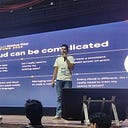Minimizing Bias in Decision-Making
Did you know we make around 35,000 decisions each day? That’s roughly one choice every two seconds, spanning from what to eat and wear to what to prioritize in a project. Most decisions happen almost automatically, without much thought. But what about those decisions that have a broader impact — especially those affecting others? How do we ensure these choices are as objective and fair as possible? And how do we guard against bias when we all, inevitably, have biases?
Understanding Bias Triggers in Decision-Making
Research shows there are certain situations where we’re most prone to bias. Being aware of these “critical bias moments” is the first step in reducing their impact. Here are the four main triggers to watch out for:
- High Ambiguity — When some aspects are challenging to quantify, it can be easy to fall back on gut feelings or assumptions.
- Compromised Cognitive Load — Information overload can push us toward quick decisions without full consideration.
- Incomplete Information — When data is missing or hard to forecast, we may inadvertently lean on preconceived notions.
- Overconfidence — Believing we’re objective and immune to bias can actually cloud judgment.
In high-impact decisions, where bias could significantly affect outcomes, it’s essential to be especially aware of these triggers.
Mitigating Bias with a Strategic Approach
Awareness is only the start. Once you’ve identified potential bias moments, there are steps you can take to actively reduce bias:
- Identify Conditions to Minimize: Are you dealing with ambiguity, cognitive overload, incomplete information, or overconfidence? Pinpoint the circumstances that could skew your decision-making.
- Reflect on Potential Biases: Recognize your own potential biases and take a step back. Try shifting perspectives — would you make the same decision if you were in someone else’s position?
- Leverage Structured Tools: Consider using decision-making aids, such as decision trees or checklists, to create a more systematic, objective process. These resources can help standardize your approach and reduce bias.
- Set SMART Goals for Objectivity: Implement SMART goals (Specific, Measurable, Achievable, Relevant, Time-bound) to measure how effectively your interventions reduce bias.
Pilot First, Scale When Effective
Organizations are intricate, interconnected systems, so a one-size-fits-all solution is unlikely to work. Try piloting your bias-reduction strategies in a smaller setting. Assess the outcomes and adapt as needed before implementing at a larger scale.
Addressing bias is an ongoing journey, and it requires self-awareness, tools, and a willingness to learn and adapt. By focusing on key moments and using structured approaches, you can make fairer, more objective decisions that support both individual and organizational goals.
